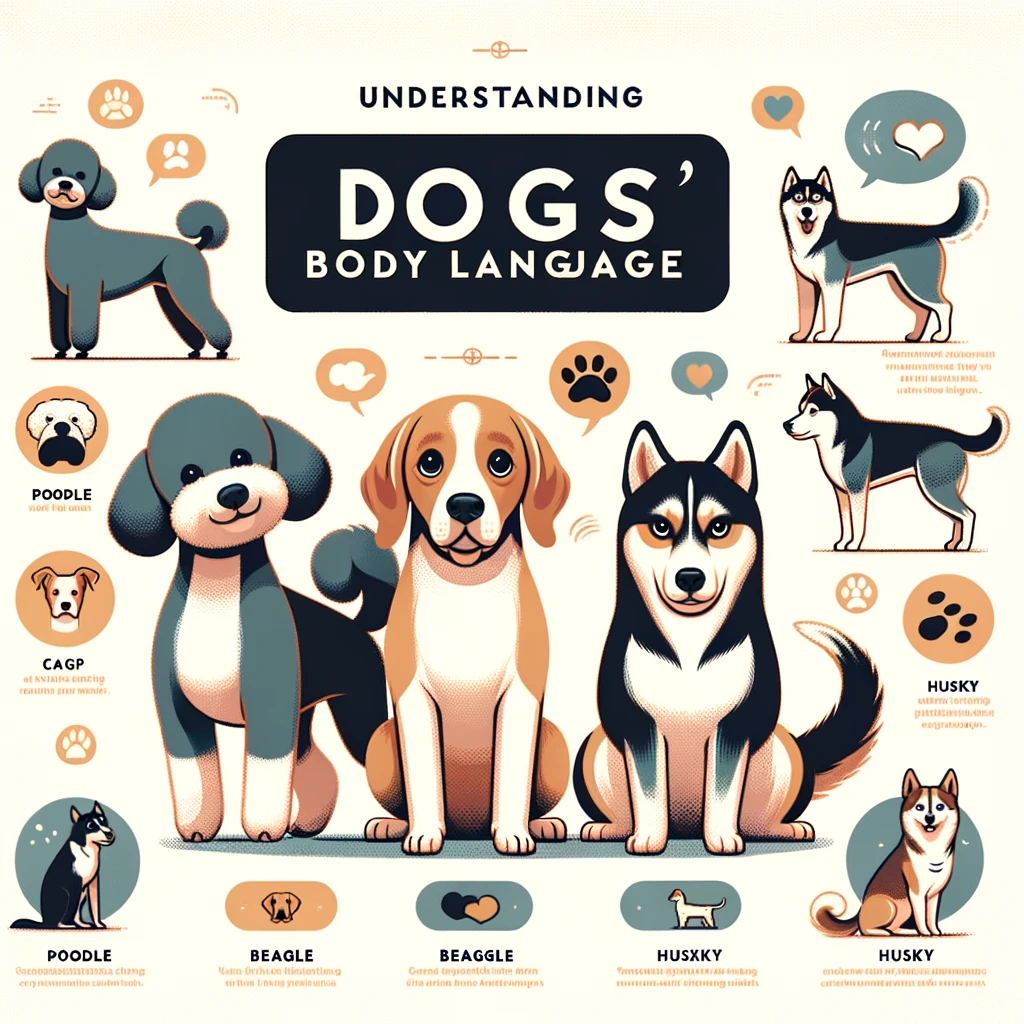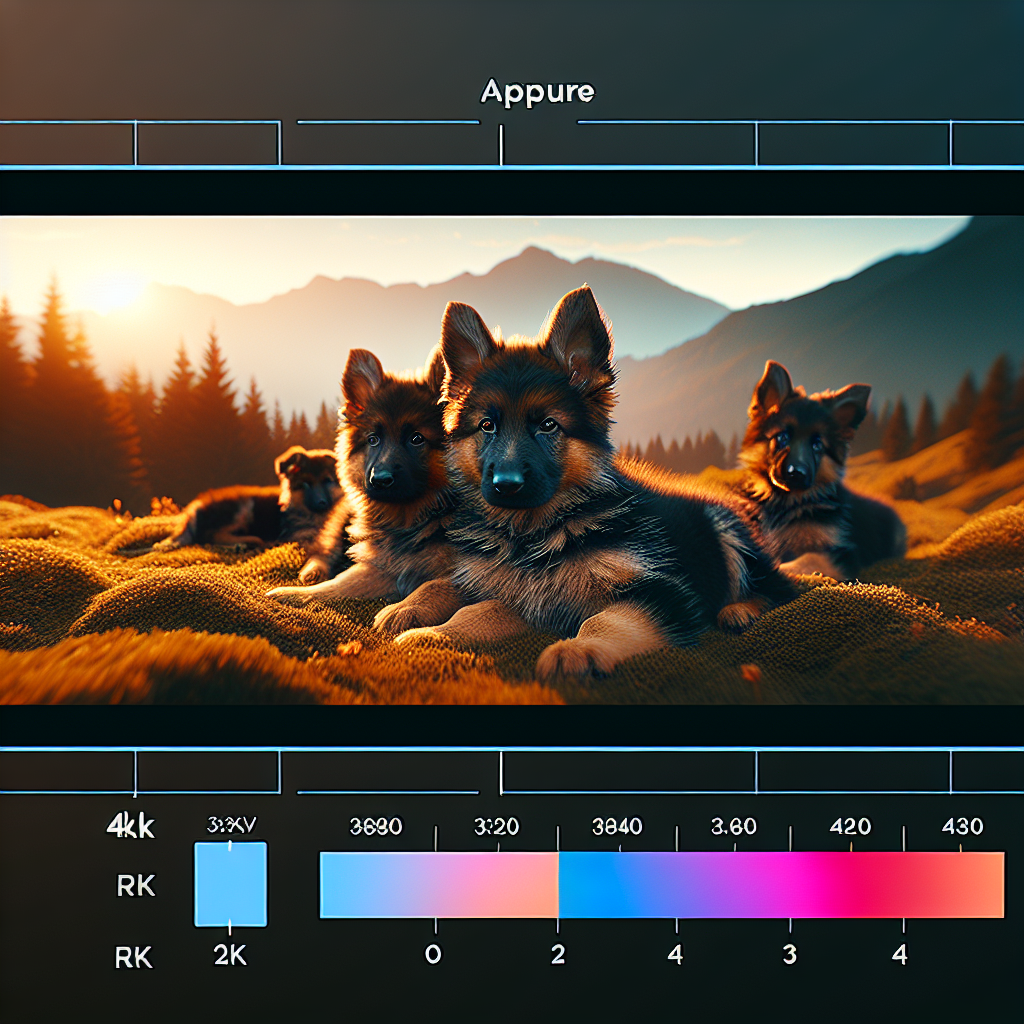Understanding Canine Body Language: Keys to Effective Communication
Understanding canine body language is crucial for effective communication with our furry friends. Dogs use a variety of non-verbal cues to express their emotions, intentions, and needs.

-
Table of Contents
- Introduction
- The Importance of Understanding Canine Body Language
- Common Canine Body Language Signals and Their Meanings
- How to Interpret Canine Facial Expressions
- Nonverbal Communication: Canine Body Language Cues to Watch for
- Enhancing Communication with Your Dog through Body Language Awareness
- Conclusion
Introduction
Understanding canine body language is crucial for effective communication with our furry friends. Dogs use a variety of non-verbal cues to express their emotions, intentions, and needs. By learning to interpret these signals, we can better understand what our dogs are trying to communicate, allowing us to respond appropriately and build a stronger bond with them. In this article, we will explore the key aspects of canine body language and provide insights into how to decipher their messages.
The Importance of Understanding Canine Body Language
Understanding Canine Body Language: Keys to Effective Communication
Dogs are known as man’s best friend for a reason. They have an incredible ability to understand and communicate with humans, but it’s equally important for us to understand their language. Canine body language is a fascinating and complex system of communication that can tell us a lot about how a dog is feeling and what they might be trying to communicate to us.
One of the key reasons why understanding canine body language is so important is that it helps us to build a strong and trusting relationship with our furry friends. Dogs are highly social animals, and they rely on body language to communicate with each other and with us. By learning to read their signals, we can better understand their needs, desires, and emotions, which in turn allows us to respond appropriately and effectively.
So, how can we start to decipher the language of dogs? It begins with observing their body posture and movements. A dog’s body posture can tell us a lot about their emotional state. For example, a relaxed and loose body posture indicates that a dog is feeling calm and comfortable. On the other hand, a stiff and tense body posture may indicate that a dog is feeling anxious or fearful. By paying attention to these subtle cues, we can better understand how our dogs are feeling in different situations.
Another important aspect of canine body language is their facial expressions. Just like humans, dogs use their faces to convey a wide range of emotions. A wagging tail doesn’t always mean a dog is happy; it could also indicate excitement or even fear. Similarly, a dog’s ears, eyes, and mouth can provide valuable insights into their emotional state. By paying attention to these facial expressions, we can better understand what our dogs are trying to tell us.
It’s also important to consider the context in which a dog’s body language is being displayed. Dogs are highly perceptive animals, and their body language can change depending on the situation they are in. For example, a dog may display different body language when meeting a new person compared to when they are playing with a familiar friend. By taking into account the context, we can better interpret their signals and respond accordingly.
Understanding canine body language is not only important for our own safety but also for the safety of others. By being able to read a dog’s body language, we can identify signs of aggression or discomfort and take appropriate action to prevent any potential harm. This is particularly important when interacting with unfamiliar dogs or in situations where there may be a risk of conflict.
In conclusion, understanding canine body language is crucial for effective communication with our furry friends. By learning to read their body posture, facial expressions, and considering the context, we can better understand their needs, emotions, and desires. This understanding allows us to build a strong and trusting relationship with our dogs, ensuring their well-being and our own safety. So, let’s take the time to observe and learn the language of dogs, and in return, we will be rewarded with a deeper connection and a more harmonious relationship with our four-legged companions.
Common Canine Body Language Signals and Their Meanings
Understanding Canine Body Language: Keys to Effective Communication
Common Canine Body Language Signals and Their Meanings
When it comes to communicating with our furry friends, understanding their body language is crucial. Dogs have a unique way of expressing themselves, and by paying attention to their signals, we can better understand their needs, emotions, and intentions. In this section, we will explore some common canine body language signals and their meanings, helping you become a more effective communicator with your four-legged companion.
One of the most well-known signals is the wagging tail. While many people believe that a wagging tail always means a happy dog, it’s important to note that this is not always the case. The position and speed of the wag can provide valuable insights into a dog’s emotional state. A high, fast wag usually indicates excitement or happiness, while a low, slow wag may suggest fear or uncertainty. Additionally, a tucked tail between the hind legs often signifies anxiety or submission.
Another important signal to be aware of is a dog’s posture. A relaxed and loose body posture generally indicates a calm and content dog. On the other hand, a stiff and tense body posture can be a sign of aggression or fear. Pay attention to the position of their ears as well. Erect ears usually indicate alertness or curiosity, while flattened ears may suggest fear or submission.
Eye contact is another significant aspect of canine body language. Direct eye contact can be seen as a challenge or a threat in the dog world. If a dog avoids eye contact or looks away, it may be a sign of submission or discomfort. However, staring with a fixed gaze can also be a sign of aggression. It’s important to strike a balance and respect a dog’s personal space when it comes to eye contact.
Understanding a dog’s facial expressions can also provide valuable insights into their emotions. A relaxed and open mouth usually indicates a calm and content dog. On the other hand, a closed mouth with tightly clenched teeth can be a sign of stress or aggression. Pay attention to their lips as well. A dog with pulled-back lips, exposing their teeth, may be warning you to back off.
Tail position is another crucial aspect of canine body language. A high, raised tail usually indicates confidence or dominance, while a low or tucked tail suggests fear or submission. A tail that is wagging slowly and stiffly can be a sign of caution or potential aggression. It’s important to consider the overall context and other body language signals when interpreting a dog’s tail position.
Lastly, vocalizations can also provide insights into a dog’s emotions. While barking is the most common vocalization, it’s important to pay attention to the tone and intensity. A high-pitched, rapid bark may indicate excitement or playfulness, while a deep, low growl can be a sign of aggression or warning. Whining or whimpering can suggest fear or anxiety.
In conclusion, understanding canine body language is essential for effective communication with our furry friends. By paying attention to their signals, such as tail wagging, body posture, eye contact, facial expressions, tail position, and vocalizations, we can gain valuable insights into their emotions and intentions. Remember to consider the overall context and other signals to accurately interpret a dog’s body language. By becoming fluent in their non-verbal communication, we can strengthen our bond with our canine companions and ensure their well-being.
How to Interpret Canine Facial Expressions
Understanding Canine Body Language: Keys to Effective Communication
Have you ever wondered what your furry friend is trying to tell you? Dogs have a unique way of communicating with us, and understanding their body language is key to building a strong bond and effective communication. In this article, we will explore how to interpret canine facial expressions, giving you the tools to better understand your canine companion.
Dogs, like humans, use their faces to express a wide range of emotions. By paying attention to their facial expressions, we can gain valuable insights into their state of mind. One of the most common facial expressions dogs use is the relaxed face. When a dog is relaxed, their facial muscles are loose, and their mouth is slightly open. This expression indicates that they are calm and content.
On the other hand, a tense face is a clear sign that something is bothering your dog. When a dog is feeling anxious or stressed, their facial muscles become tight, and their mouth may be closed or pulled back. They may also show signs of furrowed brows or a wrinkled forehead. If you notice these signs, it’s important to identify the source of their discomfort and provide them with reassurance.
Another important facial expression to look out for is the submissive face. When a dog is feeling submissive, they may lower their head, avert their gaze, and expose their neck. Their ears may be pulled back, and their mouth may be slightly open. This expression is often seen when a dog is trying to appease a more dominant individual or is feeling fearful. It’s crucial to approach a dog showing submissive behavior with care and gentleness.
Conversely, a dog displaying an aggressive face is a clear warning sign. When a dog is feeling threatened or ready to defend themselves, their facial muscles become tense, and their mouth may be closed or curled into a snarl. Their ears may be erect and forward, and their eyes may appear wide and intense. If you encounter a dog with an aggressive face, it’s important to give them space and avoid any sudden movements.
In addition to these common facial expressions, dogs also use their eyes and ears to communicate. A dog with relaxed eyes and soft, forward-facing ears is generally feeling calm and friendly. However, if their eyes are wide and their ears are pinned back, it may indicate fear or anxiety. Similarly, a dog with dilated pupils and a fixed stare may be feeling threatened or aggressive.
It’s important to remember that interpreting canine facial expressions should always be done in conjunction with their overall body language. A dog’s facial expression is just one piece of the puzzle, and their posture, tail position, and vocalizations should also be taken into account. By observing your dog’s entire body, you can gain a more accurate understanding of their emotions and respond accordingly.
In conclusion, understanding canine facial expressions is a crucial aspect of effective communication with your furry friend. By paying attention to their relaxed, tense, submissive, and aggressive faces, as well as their eyes and ears, you can gain valuable insights into their emotions and needs. Remember to always consider their overall body language to ensure a complete understanding. With these keys to interpreting canine facial expressions, you’ll be well on your way to building a stronger bond with your canine companion.
Nonverbal Communication: Canine Body Language Cues to Watch for
Understanding Canine Body Language: Keys to Effective Communication
When it comes to communicating with our furry friends, words are not always necessary. Dogs have their own unique way of expressing themselves through nonverbal cues, and as pet owners, it is crucial that we learn to decipher their body language. By understanding canine body language, we can better understand our dogs’ needs, emotions, and intentions.
One of the most important aspects of canine body language is the tail. A wagging tail is often seen as a sign of happiness and excitement, but it is essential to pay attention to the position and speed of the wag. A high, fast wag usually indicates a dog that is alert and possibly agitated, while a low, slow wag may suggest a more relaxed and content dog. Additionally, a tucked tail is a clear sign of fear or submission, indicating that the dog is feeling anxious or threatened.
Another crucial body part to observe is the ears. When a dog’s ears are relaxed and in their natural position, it generally means that the dog is calm and content. However, if the ears are pulled back or flattened against the head, it is a sign of fear or submission. On the other hand, if the ears are erect and forward-facing, it often indicates that the dog is alert and attentive.
The eyes can also provide valuable insights into a dog’s emotional state. A relaxed dog will have soft, round eyes, while a tense or fearful dog may have wide, dilated pupils. Direct eye contact can be seen as a challenge or a threat in the canine world, so it is important to avoid staring into a dog’s eyes, especially if they are unfamiliar or anxious.
In addition to these specific body parts, it is essential to pay attention to the overall posture and movement of a dog. A confident and relaxed dog will have a loose and fluid gait, while a fearful or aggressive dog may have a stiff and rigid posture. Raised hackles, or the hair standing up along the dog’s back, can indicate arousal or aggression. It is crucial to remember that a dog’s body language should be interpreted as a whole, rather than focusing on individual cues.
Understanding canine body language is not only beneficial for our own safety but also for the well-being of our dogs. By recognizing signs of fear or anxiety, we can intervene and provide comfort or remove them from a stressful situation. Similarly, being able to identify signs of aggression can help prevent potential conflicts with other dogs or people.
It is important to note that while there are general guidelines for interpreting canine body language, each dog is unique, and their individual experiences and personalities can influence their behavior. Some dogs may have specific quirks or idiosyncrasies that differ from the typical body language cues. Therefore, it is crucial to spend time observing and getting to know our own dogs to better understand their unique communication style.
In conclusion, understanding canine body language is a key component of effective communication with our furry friends. By paying attention to their tail, ears, eyes, posture, and movement, we can gain valuable insights into their emotions and intentions. This knowledge allows us to better meet their needs, ensure their safety, and strengthen the bond between humans and dogs. So, let’s start observing and decoding our dogs’ nonverbal cues to become better communicators and companions.
Enhancing Communication with Your Dog through Body Language Awareness
Understanding Canine Body Language: Keys to Effective Communication
Enhancing Communication with Your Dog through Body Language Awareness
Have you ever wished you could understand what your dog is trying to tell you? Dogs communicate primarily through body language, and by learning to read their signals, you can strengthen your bond and improve your communication with your furry friend. In this article, we will explore the importance of body language awareness and provide you with some key tips to enhance your communication with your dog.
First and foremost, it is crucial to recognize that dogs are highly expressive creatures. They use their bodies to convey a wide range of emotions, from joy and excitement to fear and anxiety. By paying attention to their body language, you can gain valuable insights into their state of mind and respond accordingly.
One of the most obvious and easily recognizable signals is the wagging tail. While many people assume that a wagging tail always indicates happiness, it is essential to consider the context and other accompanying signals. A slow, low wag may indicate uncertainty or caution, while a fast, high wag usually signifies excitement or happiness. Additionally, pay attention to the position of the tail. A tucked tail suggests fear or submission, while an upright tail indicates confidence or alertness.
Another crucial aspect of canine body language is their facial expressions. Dogs have a remarkable ability to convey their emotions through their eyes and mouth. A relaxed, open mouth with a slightly lolling tongue usually indicates a content and relaxed dog. On the other hand, a closed mouth with tightly pressed lips may suggest stress or discomfort. Similarly, wide, dilated eyes often indicate fear or anxiety, while squinting eyes may signal relaxation or contentment.
Furthermore, a dog’s posture can reveal a lot about their emotional state. A confident and relaxed dog will stand tall with their weight evenly distributed on all four legs. Conversely, a fearful or submissive dog may cower or lower their body closer to the ground. Pay attention to any signs of stiffness or tension in their body, as this may indicate discomfort or aggression.
Understanding canine body language also involves recognizing specific behaviors and actions. For instance, yawning is not always a sign of tiredness; it can also indicate stress or anxiety. Excessive panting, pacing, or lip licking may suggest discomfort or nervousness. Additionally, be mindful of any growling, barking, or snapping, as these are clear signs of aggression or fear.
To effectively communicate with your dog, it is crucial to respond appropriately to their body language. If you notice signs of fear or anxiety, try to create a calm and safe environment for your dog. Avoid forcing them into situations that make them uncomfortable and provide positive reinforcement when they display relaxed and confident body language.
Remember, effective communication is a two-way street. While it is essential to understand your dog’s body language, you should also be mindful of your own. Dogs are incredibly perceptive and can pick up on subtle cues from their human companions. Maintain a relaxed and open posture, use gentle and reassuring tones, and avoid sudden or aggressive movements.
In conclusion, understanding canine body language is key to effective communication with your dog. By paying attention to their signals, you can gain valuable insights into their emotions and respond appropriately. Remember to consider the context and accompanying signals, and always be mindful of your own body language. With practice and awareness, you can strengthen your bond with your furry friend and create a harmonious and fulfilling relationship.
Conclusion
Understanding canine body language is crucial for effective communication with dogs. By observing their body postures, facial expressions, and tail movements, we can gain insights into their emotions and intentions. This knowledge allows us to interpret their signals accurately and respond appropriately, enhancing our ability to communicate and build a strong bond with our canine companions. Therefore, developing an understanding of canine body language is essential for any dog owner or handler, as it promotes a safe and harmonious relationship between humans and dogs.





